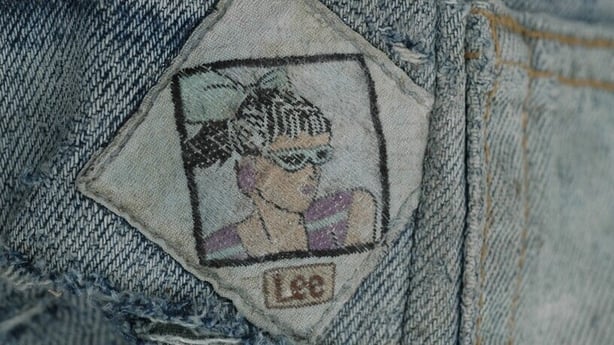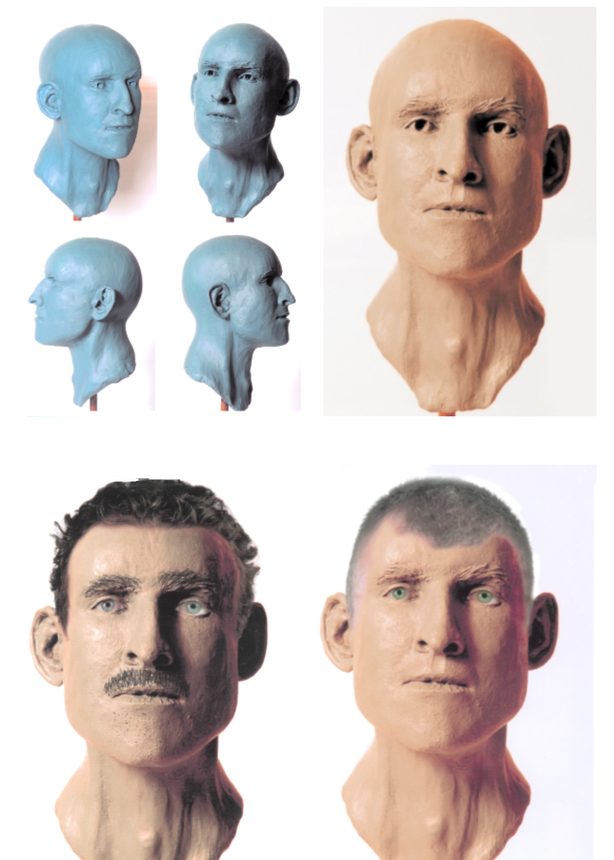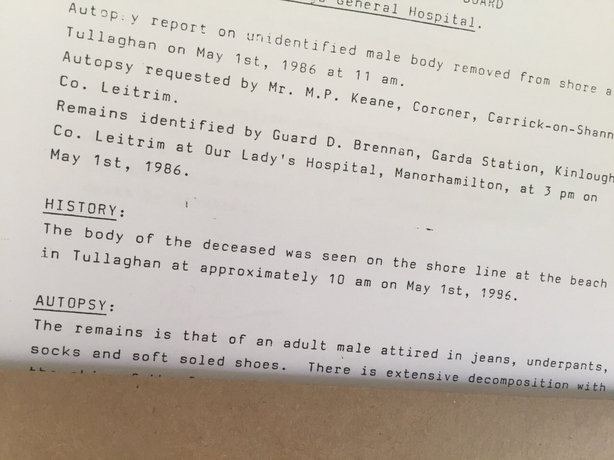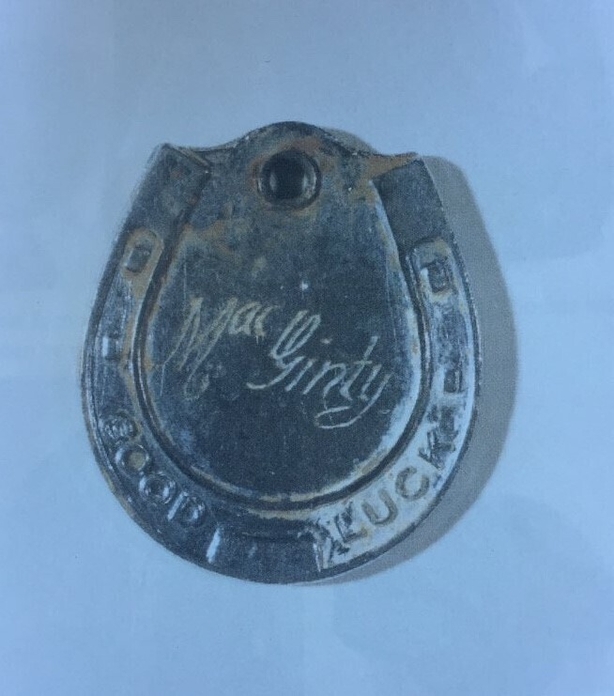Cutting-edge forensic science is solving many long-term missing persons cases but, at the end of 2020, there are many unidentified bodies still lying in graveyards across Ireland, writes Barry Cummins.
For the first time ever, a list of unidentified bodies, where DNA is on file with Irish authorities or where gardaí are aware bodies exist, is being released publicly.
Such lists are subject to change at any time. At any moment a case might be solved or another body might be found. However, at the end of December 2020, and following extensive research by RTÉ, a list is being made public today (as part of this article) which detail 16 unidentified bodies where DNA is on file, and two other cases where exhumations should take place so DNA samples can be obtained.
The publication of this list is in the hope the detail may prompt people with missing loved ones to get in contact and give DNA samples. The bodies were found in eight different counties – Leitrim, Sligo, Galway, Clare, Cork, Wexford, Wicklow and Dublin.
The oldest unsolved case is a male body found in the sea near Tuskar Rock off the Co Wexford coast in 1968. Investigators have speculated if the body may be one of those who were on board Aer Lingus Flight 712 that crashed off Co Wexford coast in March of that year killing all 61 people on board.
Many bodies from the air disaster were never recovered. The unidentified body was exhumed in recent years so a DNA sample could be taken, but so far, despite comparing the sample with a number of the families whose loved ones were never found, the body remains buried unidentified.
That body is laid to rest in a cemetery outside Wexford Town where the body of another unidentified person is buried, this time a woman whose remains were washed up at Kilmuckridge, Co Wexford, in December 1995.
The woman's body had been in the water for weeks if not months. Distressingly, and in the clearest example of how the Irish State has historically failed missing people, the woman’s skull was lost.
The skull had been brought to Dublin in 1996 with the good intention of doing further examination of the woman’s teeth to try to learn more about her identity. The rest of the woman’s body was buried in Co Wexford, but despite extensive searches in a number of locations including colleges, and the home of a former State employee, the skull has not been found.


The woman’s distinctive jeans provide a clue to the mystery, which has still not been solved. She wore a pair of Lee jeans, which featured a distinctive motif. The jeans were manufactured in Belgium in the late 1980s under a brand called 'Rumour’. She wore shoes made in France, but whether she was Irish, British, Belgian, French or a different nationality is still not known.
In 2007, 12 years after her body was found, the woman’s remains were exhumed so a DNA profile could be established. The woman is one of three unidentified female bodies – the other two are bodies washed up on the Co Clare coastline. One of those bodies was washed up this year, and the other in 2016.
Currently Forensic Science Ireland has 16 cases of unidentified human remains where a DNA sample is on file at the laboratory in Dublin’s Phoenix Park – 13 men and three women whose identities remain a mystery, but where answers can most definitely still be found.
Most of the unsolved cases are coastal discoveries, including five unidentified cases in Co Wexford, three in Co Clare and two on the Co Galway coast. The most recent unidentified bodies are a woman whose body was washed up in Co Clare in May this year, and a man whose body was found at an office block in Leopardstown in Dublin in July this year.
At the start of this year there were a number of other unsolved cases on the database at FSI but they have thankfully now been removed because they’ve been solved.
In early 2020, the body of a man found in 2014 in Rusheen Woods, Barna, Co Galway, was identified as Teodor Bruzgo, originally from Poland. The breakthrough in the case came when a Polish couple contacted gardaí to nominate Teodor as a possible match for the body that lay unidentified for the past six years.
It was in April of this year that a shocking discovery was made in a different case. Only when trees were cut back at an apartment complex in Rathmines in Dublin was a man’s skeletal remains found in the undergrowth. He has since been identified as Dublin man Stephen Corrigan.
In a heart-rending twist to the solving of the case, it was a DNA swab given to gardaí many years ago by Stephen’s, now deceased, mother that led to a match being made, and Stephen being given his identity back.
It is a salutary lesson for Irish society that Stephen’s body lay undiscovered in Rathmines for almost ten years.

"Capitalising on the roll-out of the National DNA database, we have been working to solve cases of unidentified human remains," says Dorothy Ramsbottom, who is leading the DNA section of Forensic Science Ireland.
"The science is ever-evolving, and we have been able to help bring resolution for a number of families in recent years".
Another case that saw a dramatic breakthrough this year is the tragic case of a man whose body was taken out of Dublin’s Royal Canal in 2002.
A post-mortem established the man had suffered a cardiac arrest, and he was buried unidentified at Glasnevin Cemetery for the last 18 years. But just very recently there was a big development.
A DNA sample provided by a man in the United States has given "very strong support" to the proposition that the unidentified body is the man’s brother who travelled to study in Ireland in 2001.
A fresh inquest will be held by the Dublin Coroner sometime in 2021 to establish the man’s identity, and hopefully provide more information about how he may have entered the canal.
Investigators often go to great lengths to try to solve cases. When a man’s skull was retrieved from the seabed by a fisherman close to Lambay Island off the Dublin coast in 2006, gardaí set about using every possible means to identify the man. A DNA sample was obtained, and also a facial reconstruction was done using specialists, but still the skull remains unidentified.

Since the mid-1990s I have reported on cases of missing people, and I took it upon myself in recent years to compile a list of unidentified bodies.
For a long time I felt frustrated that such information is not easily available. In recent years the Garda Missing Persons Bureau has been doing fantastic work in taking DNA samples from so many families of missing people. It is a massive task – especially these past few months in the middle of a global pandemic, and that great work by gardaí has led to scientists having samples to compare against unidentified bodies and a number of ‘cold-cases’ have been solved in recent years.
However, there is a legacy of inaction from previous decades. Information on bodies washed ashore around the country, or found at other locations around Ireland was never automatically fed into a central location.
What it means is that, someone like myself, who has researched missing persons cases for the last 25 years, still cannot say exactly how many unidentified bodies there are around the country.
What I can say is that Forensic Science Ireland have DNA and details relating to 16 unsolved cases, but there are certainly more than that.
I know for example that there is an unidentified body of a man in Co Leitrim from 1986, and another unidentified male body recovered from the River Lee near Ballincollig, Co Cork in 1999.
There are very good clues in both cases. The ‘Leitrim’ man had distinctive tattoos on both his arms, and the ‘Ballincollig’ man wore a ‘Philip Mercier’ watch and a medal engraved with ‘Good luck MacGinty’.
In both of those cases, no DNA sample was taken before the bodies were buried. The only way those cases will be solved is by exhumations taking place and DNA being taken. I understand that in 2021, such exhumations may take place.


The work undertaken in recent years by gardaí and forensic scientists has been immense, and has been driven on by success.
Solving one case leads to publicity, which leads to more people coming forward to give DNA which in turn leads to more cases being solved.
Director General of FSI Chris Enright recently told the National Missing Persons Day event that a number of cases of missing persons had been solved in 2020 by DNA technology.
There is so much to be thankful for in terms of the dedication of those searching for answers. But there is so much work to do as we approach 2021.
The most recent figure showed there are 823 people missing in the Republic of Ireland. DNA samples have been provided to Forensic Science Ireland by 237 families. That means there are over 580 families of missing people who have not yet given DNA samples.
Many of those cases relate to people who are missing for many decades, and where loved ones have lost contact with gardaí. There is a huge body of work for detectives to do, and I was happy when it was recently indicated that more officers will be assigned to the Garda Missing Persons Bureau to assist with cases.
Below is the list of cases where Forensic Science Ireland (FSI) has DNA from an unidentified body. Any mistake in this table is mine – I have put it together over time, and by cross-referencing information from FSI with my own research.
Without a doubt there are more cases of unidentified persons. There must be bodies resting in cemeteries across Ireland from the 1950s, 1960s, 1970s and even 1980s where bodies were simply buried with dignity but without a name, in a time when nobody realised that one day forensic science could solve such mysteries.
If you know of any unidentified bodies buried in any graveyards around the country please contact me at barry.cummins@rte.ie
In the meantime please take time to study this table of unidentified bodies where FSI are waiting for samples to be provided by families of missing people. Hopefully within the next 12 months some cases in this table will be solved. I’m convinced that, if we all put our shoulder to the wheel, there will be more successful matches to celebrate in 2021.
Nollaig shone daoibh go léir, and spare a thought for these 18 unfortunate souls.
Unidentified Bodies in Ireland - compiled by Barry Cummins, December 2020
Year remains were located: Location:
1968 Tuskar Rock, Co Wexford (Male)
1986 Tullaghan, Co Leitrim (Male)
1993 Dublin, south city (Male)
1995 Kilmuckridge, Co Wexford (Female)
1996 Inis Mór, Co Galway (Male)
1999 Ballincollig, Co Cork (Male)
2002 Aran Islands, Co Galway (Male)
2002 Salthill, Co Galway (Male)
2003 North Beach, Greystones, Co Wicklow (Male)
2006 Lambay Island, Co Dublin (Male)
2009 Rosses Point, Co Sligo (Male)
2010 Cliffs of Moher, Co Clare (Male)
2011 Kilmore Quay, Co Wexford (Male)
2013 Cullenstown Beach, Co Wexford (Male)
2016 Cliffs of Moher, Co Clare (Female)
2019 Kilmore Quay, Co Wexford (Male)
2020 Fanore, Co Clare (Female)
2020 Leopardstown, Co Dublin (Male)

